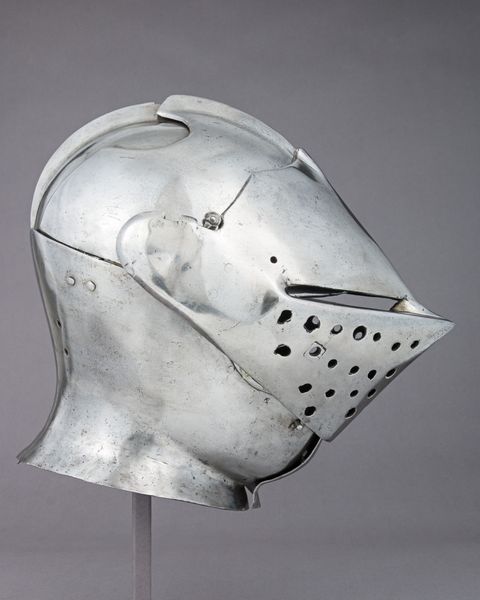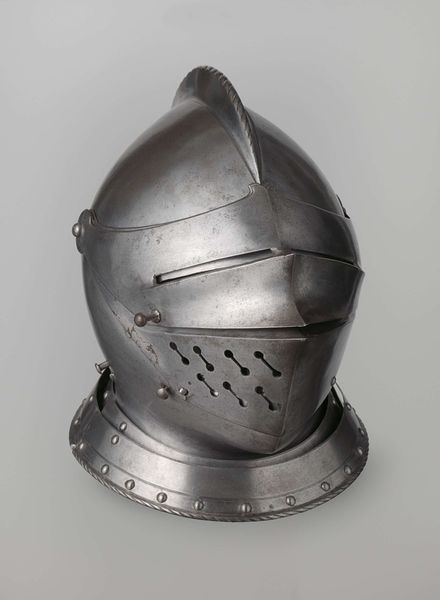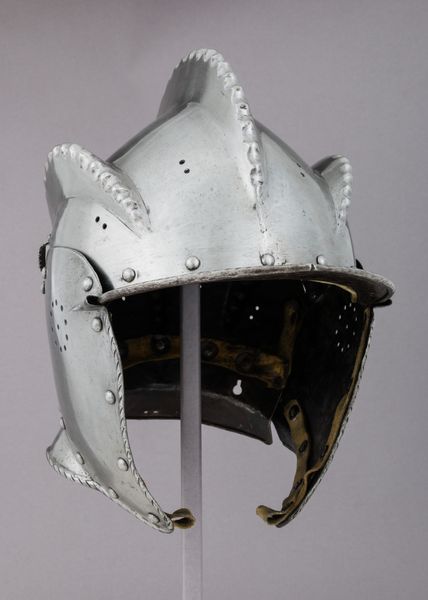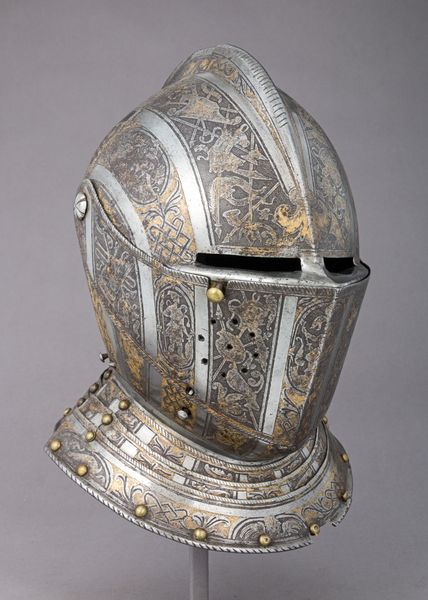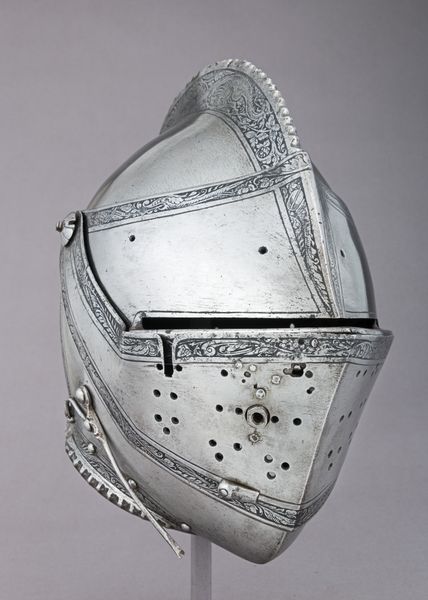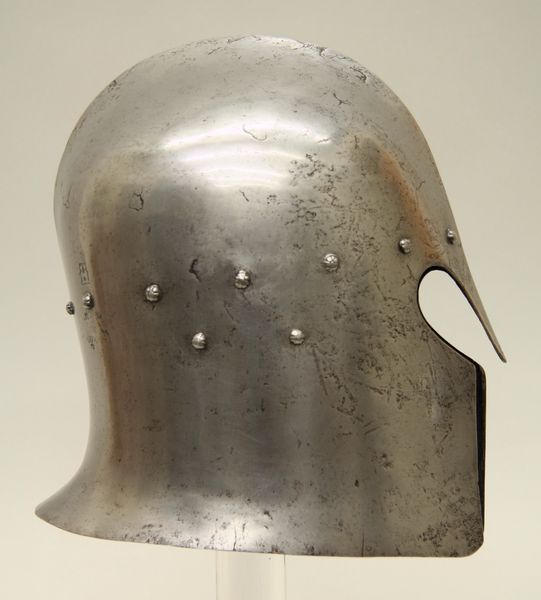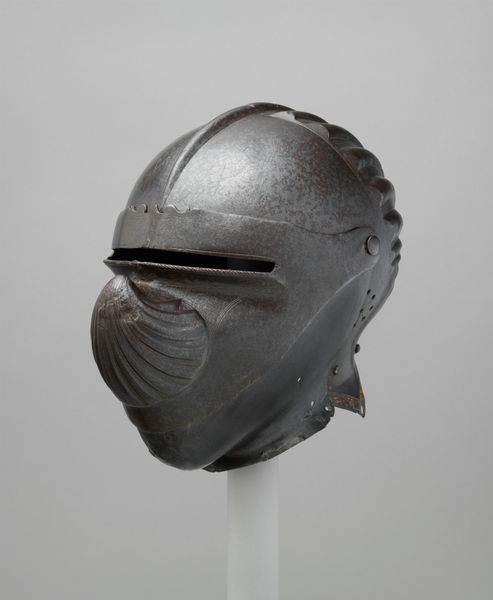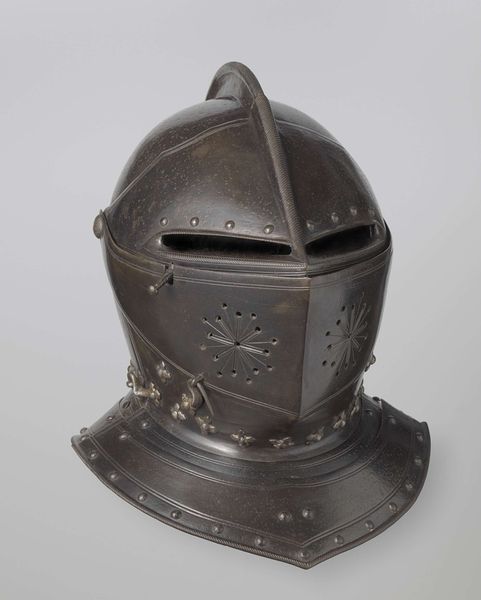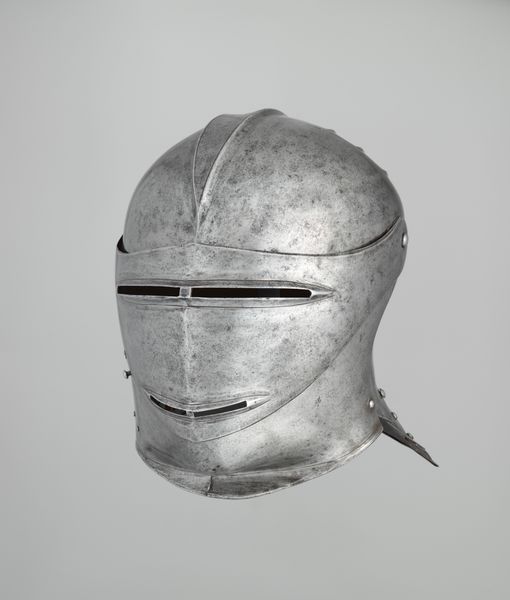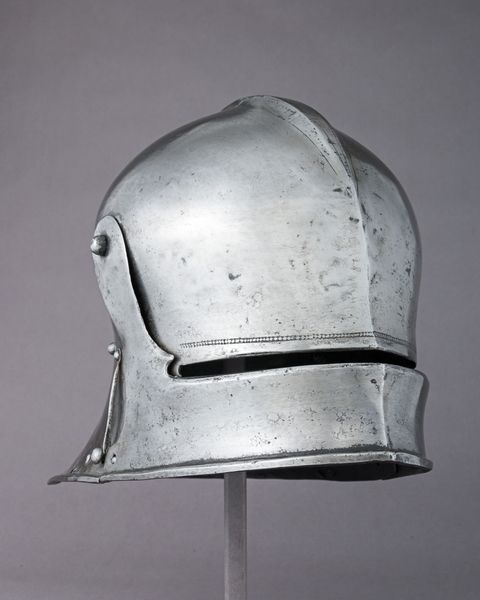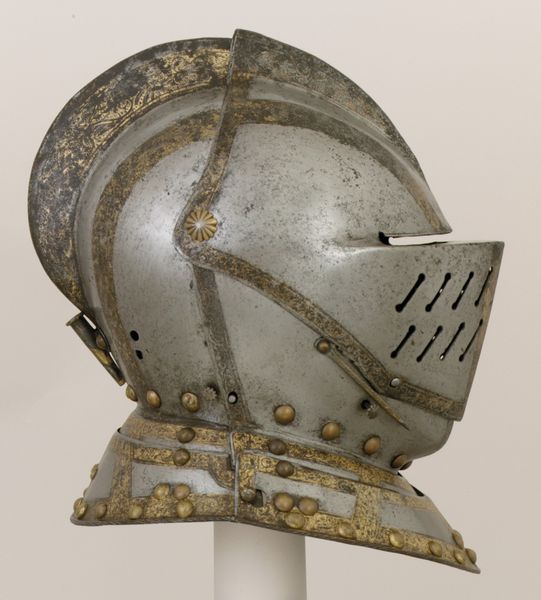
metal, sculpture
#
medieval
#
metal
#
sculpture
#
sculpture
#
armor
Dimensions: H. 12 1/8 in. (30.8 cm); W. 8 1/8 in. (20.6 cm); D. 10 3/4 in. (27.3 cm); Wt. 6 lb. 8 oz. (2948 g)
Copyright: Public Domain
Curator: What a stern and formidable visage. There's a certain unyielding silence radiating from this cold steel. Editor: Indeed! Here we have a Barbute, a type of helmet made by Bernardino da Carnago around 1450 to 1500. It is currently held at the Metropolitan Museum of Art. A relic from the Medieval Period, and made from metal. Curator: Medieval austerity at its peak. The simplicity of the metal work lends it a beautiful gravity. It’s practical but has this minimalist aesthetic I wasn’t expecting. And the subtle dome at the top—it’s like a stoic metal teardrop. Editor: Absolutely. The Barbute’s design emerged from earlier helmet forms in Italy, gaining popularity for its relatively open face which offered both protection and improved visibility. The "T" shaped opening in the front and the overall form was carefully planned. I’d call it form *and* function working in lockstep, serving the socio-political reality of warfare, right? Curator: Yes! And think of the sound—the clang of sword on steel. A visceral sensation entirely divorced from our sanitized screens. You almost forget, gazing at this object encased behind glass, that it’s a warrior’s shell. Editor: That brings up an interesting question about display, doesn’t it? How do museums deal with the inherent violence connected to the artifacts they are presenting? Think of its public role of both celebrating craftsmanship and presenting warfare! Curator: That’s the core tension of any object meant for protection. Perhaps the patina is history whispering through the ages... though maybe that's just me getting poetic. Editor: On the contrary. Maybe understanding the context *a little* helps us grapple with our present day conflicts. Curator: Beautifully said. Let us step away now and allow the Barbute to guard its secrets once more. Editor: Agreed. It has a continued presence in our cultural heritage regardless!
Comments
No comments
Be the first to comment and join the conversation on the ultimate creative platform.

